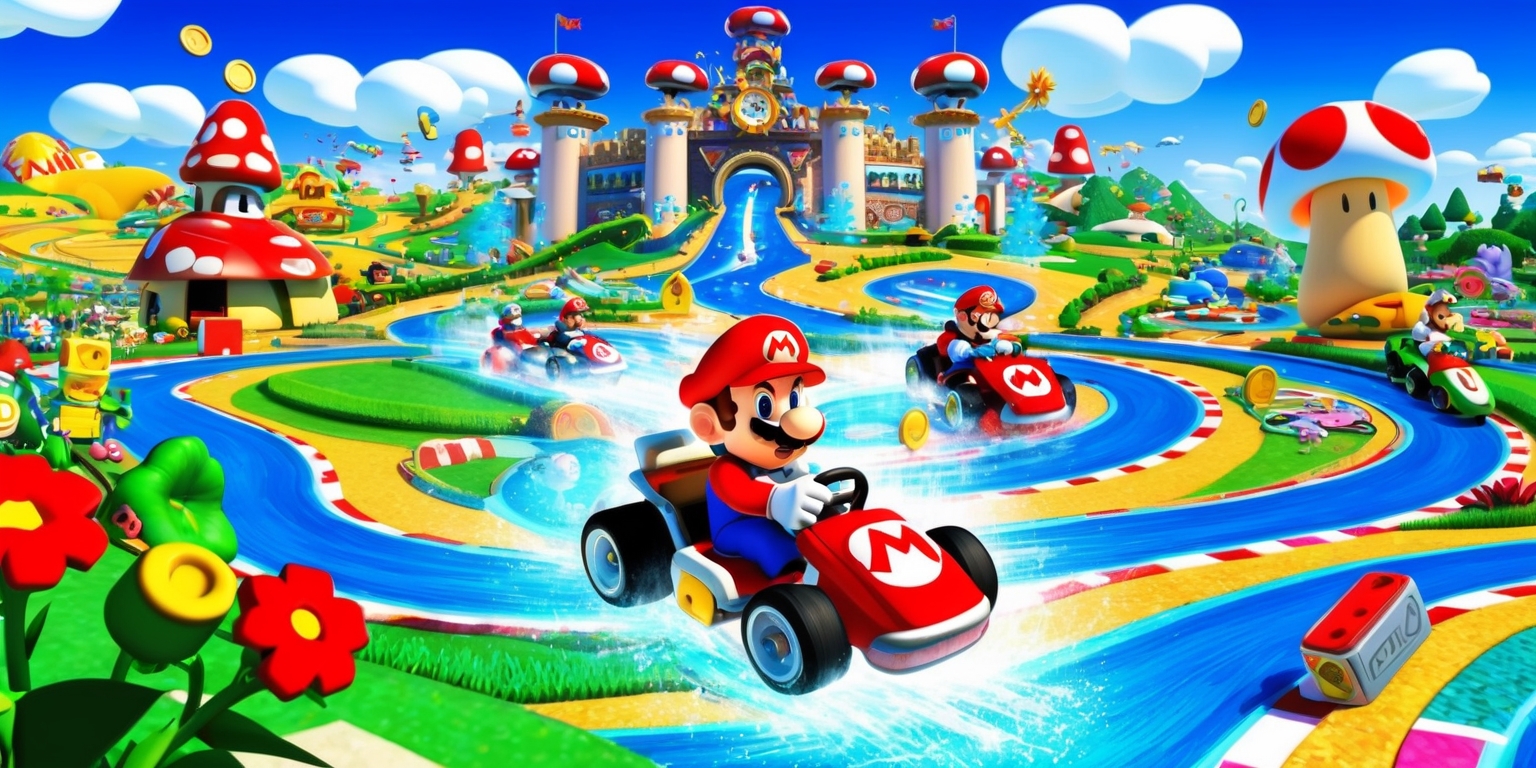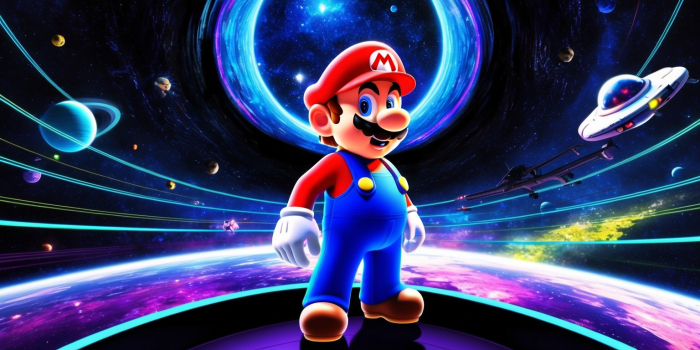 2025-06-09 05:13:33
2025-06-09 05:13:33
Racing Redefined: Mastering Wall Riding and Aerial Tactics in Mario Kart World
Mario Kart World invites players into a vibrant universe where every twist, jump, and daring maneuver contributes to a thrilling journey over open roads and intricate tracks. Amid the chaos of competitive races and sprawling maps, racers have the opportunity to refine unique skills that set them apart. One such skill is wall riding—a daring technique that transforms flat barriers into racing highways when executed with precision and timing. This mechanic not merely enriches the gameplay with added complexity but also enhances the immersive feel of the world, demanding agility, practice, and a deep understanding of the game’s physics. As players explore various methods to master this trick, every race becomes a chance to showcase ingenuity and strategic prowess.
Dynamic Racing Ecosystem
Within Mario Kart World, the environment is a bustling hub of diverse opportunities that merge exploration with high-speed racing. The game’s expansive open-world map is more than a backdrop; it evolves into a living, breathing racetrack filled with secret shortcuts, interactive elements, and hidden rewards waiting to be discovered. Among these, the ability to wall ride emerges as a standout technique that leverages the environment creatively. The flat surfaces along the intricate corridors of each level are transformed into dynamic pathways when the technique is executed with finesse. Every twist in the track and every sudden ramp invites racers to experiment and hone their skills. The integration of this mechanic into the overall racing strategy adds layers Injecting the gameplay with an exhilarating mix of energy and groundbreaking ideas, resulting in each race feel like an unfolding adventure.
Innovative Wall Riding Mechanic
The wall riding feature offers an innovative twist on traditional racing, enabling players to drive at a perpendicular angle along flat walls. This mechanic challenges conventional driving methods by rewarding those who practice and perfect the art of mid-air control. In Mario Kart World, the ability to maintain momentum while defying gravity demands both precise timing and a keen awareness of the environment. The trick is not a mere cosmetic flourish but a practical tool in navigating through the game’s diverse obstacles, collecting essential game elements like P Switches and ? Panels, and enhancing the racing experience. This integration of environmental physics and player control not only reinvents the racing dynamics but also provides enthusiasts with a thrilling new dimension in competitive play.
Mastering the Art of Aerial Maneuvers
Wall riding in Mario Kart World is not a one-dimensional trick but rather a gateway to mastering a suite of aerial maneuvers. Players quickly learn that the technique involves more than just colliding with a barrier; it requires entering a flat surface at precisely the right angle while still in mid-air. This technique is crucial for unlocking hidden collectibles scattered across the game world, which in turn can offer significant advantages during intense competitions. The required precision and the seamless transition from airborne movement to wall riding challenge even seasoned players. Through persistent practice, racers develop a nuanced understanding of the game’s momentum and physics, refining their ability to maintain a steady trajectory along the wall. This deep mastery leads to improved performance and an elevated status among peers.
Utilizing the Jump Boost Advantage

The jump boost is arguably one of the most accessible methods for initiating a wall ride. In this approach, players strategically use a ramp to generate enough upward momentum before encountering the wall. Activating a jump boost by pressing the designated control at the right time propels the kart into the air, where precision is crucial. The subsequent challenge is to align the vehicle with a nearby wall perfectly, ensuring a smooth transition into the wall riding position. This maneuver relies on both timing and spatial awareness, as a miscalculated angle could send the racer off course. Yet, when executed correctly, the jump boost provides a seamless bridge between airborne acrobatics and surface-bound control. The immediate surge of speed and the visual flair of the jump boost add an engaging element to every race, blending skill with spectacle.
Harnessing the Feather Item Technique
Another intriguing method to achieve wall riding is by employing the Feather item, a tool that grants temporary elevation and speed. With this item in hand, racers gain a brief opportunity to become airborne without needing a traditional jump or ramp. The technique is similar in essence to the jump boost, requiring players to time the activation of the Feather item in close proximity to a wall. Upon use, the item delivers a smooth lift that, if aligned carefully, ensures the vehicle’s trajectory leads directly into the wall. This strategy not only diversifies the ways racers can exploit the environment but also introduces a creative layer to in-race tactics. Mastery over the Feather item technique allows players to navigate tricky sections of the map while collecting important rewards and maintaining a competitive edge in heated matchups.
Innovation Through Rail Grinding
Grinding on rails represents a fresh challenge that adds flavor to Mario Kart World’s arsenal of racing techniques. As players approach a rail, their vehicle instinctively latches on, initiating a grinding sequence that can be both visually impressive and strategically important. The artistry of this technique lies in the transition from racing along the rail to converting that momentum into a wall ride. By performing a timely trick off the rail—triggered by a specific button press combined with directional input—players can direct their vehicle toward an adjacent wall. This method demands precision and quick reflexes, pushing players to adapt their approach on the fly. The blend of fluid rail dynamics with the static challenge of wall riding underscores the game’s commitment to merging creativity with high-speed action, rewarding those who dare to experiment with innovative tactics.
Precision with the Charge Jump Technique
The Charge Jump technique stands out for its potential to deliver a substantial boost, and when combined with wall riding, it creates a high-risk, high-reward scenario in racing. By holding down the appropriate control, racers accumulate power, visually signaled by an ascending color indicator—ranging from a subtle blue to a dazzling multicolored display. Once released, the accumulated speed can be meticulously directed toward the wall. Achieving a successful transition hinges on the delicate balance between timing, pressure control, and vehicle orientation. This method ranks among the more challenging of the wall riding techniques, appealing to veterans looking for an extra layer of complexity. Despite its difficulty, mastering the Charge Jump opens up significant advantages, making it a prized tactic for those who invest time refining Their method when facing the intense pressure of competition.
Integrating Techniques into Competitive Play
In the rapidly evolving competitive landscape of Mario Kart World, every advantage counts, and the strategic application of wall riding can be a defining factor in a racer's performance. Beyond the visual appeal of executing these tricks, the ability to seamlessly integrate jump boosts, Feather lifts, rail grinding, and Charge Jumps into one's overall racing strategy is crucial. Advanced players learn to read the terrain and anticipate when a wall might transform into a shortcut or a pathway to vital in-game rewards. Moreover, leveraging these techniques can disrupt an opponent's momentum during high-stakes races, forcing them to adjust their own strategies on the fly. The integration of these skills into competitive play illustrates the depth of Mario Kart World and transforms each race into an unpredictable and immersive contest where precision, strategy, and innovation coalesce.
Visual Harmony and Game Design
The design aesthetics of Mario Kart World play an integral role in making advanced techniques like wall riding both accessible and engaging. The vibrant color palettes, detailed textures, and dynamic environments not only captivate the players’ senses but also provide subtle visual cues that are essential for timing and precision. The contrast between flat walls and the varied surfaces of the terrain ensures that each wall ride is a visually striking event, reinforcing the connection between form and function. The game’s visual design diminishes any artificial feel, creating an organic setting in which every jump, boost, and twist feels intuitive. This blend of artistry and tactical gameplay encourages racers to immerse themselves fully in the experience, making each element—from the shimmering surfaces to interactive obstacles—both a practical aid and a feast for the eyes.
Exploring the Depth of Tactical Mastery
The impressive array of wall riding techniques available in Mario Kart World illustrates the game’s commitment to rewarding exploration and tactical mastery. Each method—whether leveraging a jump boost, utilizing a Feather item, or executing a Charge Jump—offers players a unique challenge that requires dedicated practice. The game functions as an arena where both instinctive reaction and learned skill are equally crucial. The necessity to adjust to ever-changing race conditions and terrain configurations elevates the complexity of the racing experience, making every race a creative, physical contest. This depth in tactical mastery transforms every competition into an opportunity for personal improvement and ingenuity, inviting players to experiment, fail, adapt, and ultimately excel in the art of advanced maneuvering.
Challenges and the Spirit of Practice
The journey toward becoming proficient in wall riding is paved with challenges that test players’ reflexes, spatial awareness, and persistence. The learning curve associated with these advanced techniques transforms every race into a practice ground where experimentation is not only encouraged but essential for success. Players quickly discover that every trick requires a different approach, and uniform mastery demands a keen understanding of the timing and physics unique to each method. Whether it is managing the delicate balance of a Charge Jump or the precise angle of a rail grind, the path to perfection is one of constant trial and error. This element of progressive mastery adds a rewarding dimension, as overcoming each challenge builds confidence and elevates the overall competitive spirit within the game.



